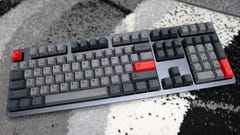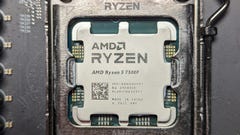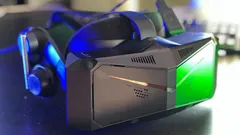The Invincible review - gorgeous sci-fi that doesn't quite take off
Science friction.
The Invincible is my kind of science fiction. When I look up at the stars, I feel wonder and mystery, and romance, even. I believe anything is possible out there and that we only have to find it. And when I look at The Invincible, it makes me feel that way too. You can see it in the screenshots. In hues that are almost gaudy, there are sweeping desert landscapes where huge finger-like rock formations reach out as if to try and scratch the surface of strange moons behind them. There are turquoise skies fading to starry black, and boiling oranges beneath them. It's like looking at a postcard of what space could be - a space of emotional warmth and feeling. I find it mesmerising.
This particular setting - this fiction - is based directly on a book written by Polish author Stanisław Lem in 1964. It's a book by the same name, The Invincible, and it tells of a gigantic spacecraft landing on an alien planet and making a stunning discovery. The game is told from a different viewpoint but it very much deals with the same overarching storyline and themes: the relationship between different forms of life, and how something might evolve if left unchecked.
In the game, you are a biologist working with a small research crew on a vessel that isn't The Invincible. Whether or not that gigantic ship is even in the game, you don't know - you have nothing to do with it. Your name is Yasna, and the game begins with you waking inexplicably on the surface of the alien planet, alone, wondering how you got here from your ship and where the rest of your crew are. Yasna's journey to remember what's going on becomes your journey, then. And casting you as a biologist and not, say, a soldier, informs a lot of what you'll be doing in the game, as well as how you'll be doing it.
This isn't a combat-oriented game. Nor is Yasna super-human in her physical capabilities. You'll put her through a lot, but every time you ask her to climb or sprint, you'll see in detail the effort she exerts doing it. If you make her clamber up a ledge, you'll see her hands being placed on the ledge, her legs go up, her body shimmy up, and then watch as she stands up. There'll be the scrape of canvas as she does so, and some grunts of exertion. Even shimmying down from a ledge takes effort. Likewise, the helmet of her space suit will fog with condensation and you'll hear her breath become ragged if you sprint around. This is not a game where the bumps of exploration are smoothed away - it's one where you feel them. It even makes a feature of them.
Mechanically speaking, The Invincible is quite close to Firewatch or Call of the Sea in terms of how it plays. One large aspect of the game is walking around and commenting on the things you see, as you record a field report of your discoveries. As this happens, timed dialogue boxes appear that allow you to make additional comments about what you find. What might it mean to a biologist, for instance, to discover some flora on an alien planet? Yasna's perspective really comes into view here, and it's a refreshing perspective to play from. You also get the opportunity to add remarks to conversations you have, when, eventually, you find someone to talk to. Timed-decision moments can also present more meaningful choices, too. Will you sacrifice a piece of equipment to help someone and put yourself at risk, for example? As to how impactful these decisions are on the overall outcome, it's hard - after one playthrough - to say.
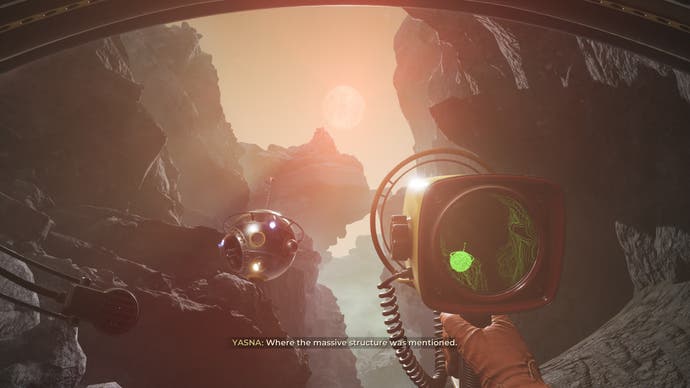
The other half of the 'what you do' equation involves playing with gadgets. As you walk around, you'll find things you can prod and poke. I don't want to say too much because discovery is a big part of the game, but it's no spoiler to say the research mission you're a part of has equipment that you'll come across. When you do, you'll want to touch it. It's almost irresistible; switches and levers protrude from everything, begging to be used. There are no digital panels anywhere - this is analogue in the way the old Star Trek TV series in the 1960s was. Rows of nondescript buttons you can mash to do... something. Clack! The shields are powered up, Commander. Takka takka takka takka! I'm picking up a strange reading, Commander! It almost doesn't matter what these things do as long as they look and sound the part. And they do. They really do.
Every invention in The Invincible looks like it's pulled from a museum of pulp sci-fi creations (Lem's book is technically hard sci-fi, but it's pulp sci-fi I keep seeing here). It's all Smeg fridges everywhere you look - chunkiness and curviness and thick metal heftiness. It's ridiculous, really, when you think about what it's being used for: being taken to outer space. You'd struggle to carry this down the stairs, let alone put it on a rocket and blast it out of the atmosphere. But as with so much else in this game and its version of science fiction, it's more important that it looks nice, and that it feels nice to play around with. The game delights in it.
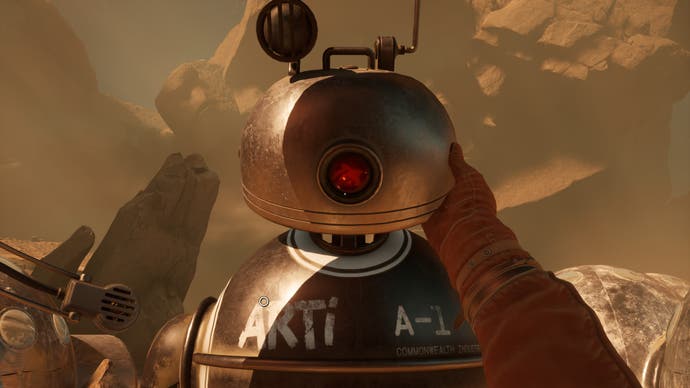
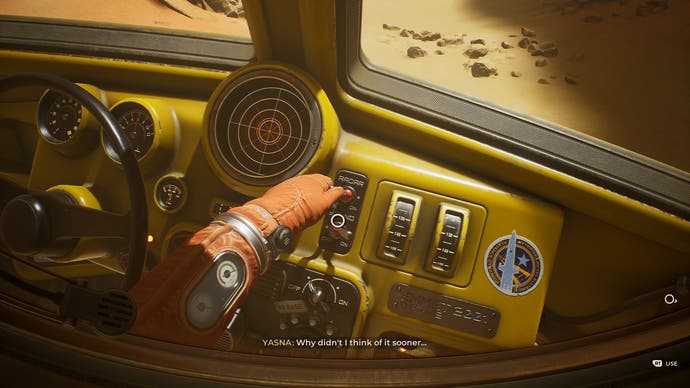
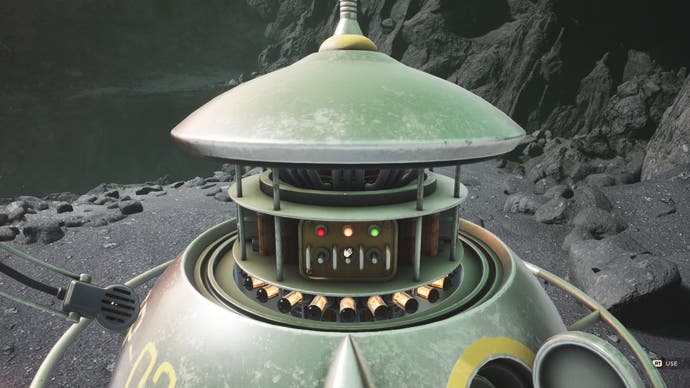
Say you come across a broken probe, a metallic football of a thing with pointy antennae and telescopic, protruding camera eyes. Whereas I'd usually expect a game to let me have one interaction with it, here, there are several. Maybe you need bang on the metal hood to get at the insides, then maybe you need to push some buttons and fiddle with some knobs before it spits out some surveillance slides for you to look through. Or maybe to use a radio you need to flip a switch to turn it on, then twiddle a dial to find whether there's any sound coming from a station. The Invincible is so touchable and so pleasing with its audio and visual feedback, that it's almost an ASMR sensory box.
Through the objects, then, come some puzzles, but they're only ever quite light in terms of what they ask of you. Maybe you need to guide a probe by issuing verbal commands for how many degrees it should turn in one direction, and then how many metres it should progress. Or maybe you need to work out how to get into a black box in a vehicle. But it's never very hard. Even the gadgets you're given to help you explore and locate things never seem to amount to anything. They'll be intertwined in some exploratory moments, but I hardly use some of them the entire game. They end up feeling like props. Nice props - the sort you'd find, again, in a vintage sci-fi museum - but props all the same.
It adds to a feeling in The Invincible that you play a bit of a superficial role in what unfolds in the game. That you're there to witness something rather than have authorship over it - as though the Polish developer Starward Industries might be so reverential towards Lem's work that it doesn't want the player deviating too far from it. There are too many occasions where it feels like things are happening that you can't do much about other than experience them.
There's a particularly telling moment at the end of the game where I listen to a five or 10 minute conversation about why what I've witnessed is a big deal, and what it means. It's like the game is double-checking that I've taken all the right messages from Lem's work rather than trusting me to discover it myself. And I don't mind that so much - not least because the surroundings here are so enticing - but when there's nothing to actually do in that moment other than run around in circles, my mind starts to check out. It's a bit like someone is simply telling me a story at that point, rather than that I'm actually playing a game. And that's what I feel about so much of The Invincible, that I'm a passenger on a ride rather than the one driving it. But again, I wouldn't mind that so much if there were more to actually do while riding around on it. A few more oversized fidget-spinners of machinery to fiddle around with. There are too many machines, or knobs and dials, that look inviting that I can't do anything with.

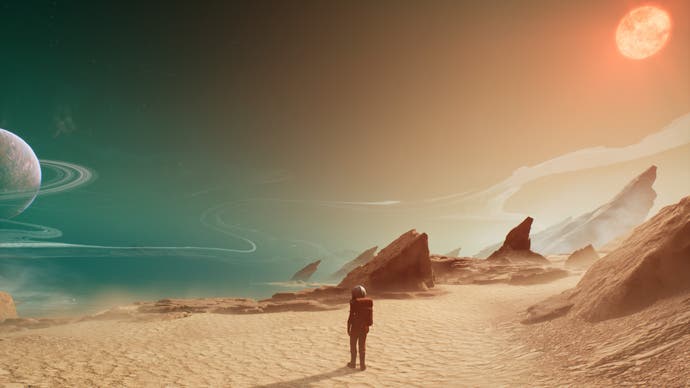

It doesn't help that some things the game relies on aren't as sharp as they could be, either. The vocal performances are understated in a way that I really like - it makes them much more pleasing to listen to for several hours - but sometimes they can be sluggish in terms of 'firing', leaving me waiting around for something to happen. There are some odd problems with dialogue volume too, whereby Yasna's voice - my character - will dip in volume or be much quieter than other voices talking to me.
For a game that relies so much on its story, it's also strange that the demo I played this summer revealed one of the major plot points in it. I understand that it's a juicy thing to tease a player's excitement with, but it meant the second part of the game held few surprises for me. I also felt like the game was weaker towards the end, when the focus turned from the eerily lonely planet, and the otherworldly mysteries there, towards another character who wasn't as interesting by comparison. These events happening at night, when all the bright colour and sweeping vistas of the planets were hidden, didn't help, though when the sun rose on the final section of the game, it was - visually speaking - spectacular.
I don't want to seem down on The Invincible because I really enjoyed the several hours I spent playing it. I liked the main characters, I loved the world and the inventions in it, and I was absorbed by the story. I've also got a lot of time for calm game experiences like this, which are like books at bedtime, offering gentle intrigue rather than stress and anxiety. As a recreation of Lem's book - one you can walk around in and feel the atmosphere of - The Invincible absolutely works. It's a very pleasant place to be. But it's in only being able to use one door of a vehicle, or push a few buttons on a control panel, that limitations reveal themselves. There are too many facades, and the ideas and interactions that are there never go quite far enough. Ultimately, it ends up feeling a bit thin. It never quite takes off.



